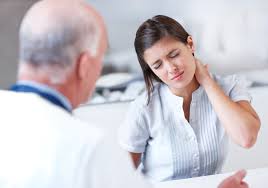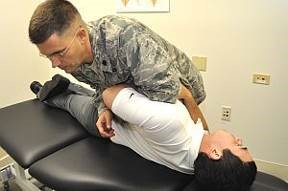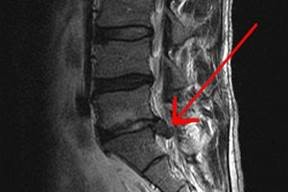Chiropractor vs. Massage for Neck Pain
When you’re suffering from neck pain, your first instinct might be to have your neck massaged. But, the truth is, you might be suffering from something that a simple muscle massage may not be able to treat effectively. In cases such as these, professional chiropractic treatment may be required. Neck pain can develop for a wide range of reasons, from something as simple as a stiff neck from being online too long to something as serious as a pinched nerve or a cervical spine that’s out of alignment. But, regardless of the reason, you want relief. And, choosing the right care provider is the first step in finding the lasting relief you’re looking for. Here’s how to tell when you should seek a neck pain chiropractor Wilmington NC over a massage.
7 Signs You Should See a Neck Pain Chiropractor Wilmington NC
A massage only deals with soft tissue ailments. So, if sore or tight neck muscles are at the basis of your neck pain, then a simple neck massage may suffice. But, in more serious cases, a visit to a neck pain chiropractor may be recommended.
Here are seven key signs that you should see a chiropractor for your neck pain:
- The pain and/or stiffness in your neck doesn’t improve after a few days
- The pain affects your ability to turn your head left or right
- You take over-the-counter pain medications just to make it through the day
- Your neck pain has progressed to include numbness or tingling in the wrists and/or hands
- The pain is severe in the morning but improves throughout the day
- Your pain started a few days after an auto accident
- You feel as if the pain is being caused by something more serious than tense muscles
The Benefits of Chiropractic Treatments for Neck Pain
One of the key differences between a masseuse and a chiropractor is the chiropractor has an in-depth understanding of the body’s musculoskeletal system as a result of years of training and education. This provides a chiropractor with the innate ability to perform a thorough examination of your neck, arms, and hands. In some cases, an x-ray or MRI may be required to assist in the chiropractor’s diagnosis.
Once diagnosed by your chiropractor and treatment is initiated, your neck pain should start lessening in its intensity. The muscles around your neck will start loosening up and you’ll find it easier to move your head. In a large number of cases, routine chiropractic care can result in a substantial reduction or complete elimination of neck pain.
Southeastern’s Neck Pain Chiropractor Wilmington NC Can Help You Manage Your Pain
If you have neck pain that’s severe enough to be impacting your daily life, it’s time you sought the help of an experienced neck pain chiropractor. With the right treatment, your pain could be substantially reduced or even eliminated. Call Southeastern today at 910-790-3666 to schedule an appointment with one of our chiropractors. We are here for you. With six locations throughout the Wilmington area, we have an office conveniently close to you.


 Participating in sports is fun. Sports provide healthy exercise, comradeship, a sense of competition, and the opportunity to build and improve athletic skills. However, all sports also involve some risk of injury. In 2006, the National Electronic Injury Surveillance System reported over half a million injuries, and that figure is only for basketball. The same agency recorded another two million sports injuries associated with bicycling, football, and other sports. And it’s not just adults who risk injury—the National SAFE KIDS Campaign and the American Academy of Pediatrics report that 3.5 million kids age 14 and younger are injured every year playing sports.
Participating in sports is fun. Sports provide healthy exercise, comradeship, a sense of competition, and the opportunity to build and improve athletic skills. However, all sports also involve some risk of injury. In 2006, the National Electronic Injury Surveillance System reported over half a million injuries, and that figure is only for basketball. The same agency recorded another two million sports injuries associated with bicycling, football, and other sports. And it’s not just adults who risk injury—the National SAFE KIDS Campaign and the American Academy of Pediatrics report that 3.5 million kids age 14 and younger are injured every year playing sports. Lower back pain (LBP) is so widespread that it was listed in the 2010 Global Burden of Disease report as being the single leading cause of disability worldwide. Over half of all working Americans have lower back pain symptoms each year, resulting in lost work time and enormous expense – Americans spend over $50 billion each year to treat their back pain.
Lower back pain (LBP) is so widespread that it was listed in the 2010 Global Burden of Disease report as being the single leading cause of disability worldwide. Over half of all working Americans have lower back pain symptoms each year, resulting in lost work time and enormous expense – Americans spend over $50 billion each year to treat their back pain. Unless you’re either very, very young or live on a remote desert island without TV, radio, Internet or print media, you’ve probably heard the term “core strength” before. Serious athletes and exercise enthusiasts talk about it at the fitness center, and so do their coaches and trainers. But did you know that chiropractors and physical therapists talk about it too? So what exactly is core strength and why do some kinds of healthcare professionals care about it so much?
Unless you’re either very, very young or live on a remote desert island without TV, radio, Internet or print media, you’ve probably heard the term “core strength” before. Serious athletes and exercise enthusiasts talk about it at the fitness center, and so do their coaches and trainers. But did you know that chiropractors and physical therapists talk about it too? So what exactly is core strength and why do some kinds of healthcare professionals care about it so much? A growing number of families in the U.S.—both parents and children—are discovering the benefits of complementary and alternative medicine (CAM), including chiropractic care. The good news is that you’re never too young or too old to benefit from the types of therapies a skilled chiropractic physician can provide. Today’s chiropractors generally have the training and experience to work with patients from early childhood through to advanced age. However, some practitioners also choose to focus on the unique needs of specific types of patients.
A growing number of families in the U.S.—both parents and children—are discovering the benefits of complementary and alternative medicine (CAM), including chiropractic care. The good news is that you’re never too young or too old to benefit from the types of therapies a skilled chiropractic physician can provide. Today’s chiropractors generally have the training and experience to work with patients from early childhood through to advanced age. However, some practitioners also choose to focus on the unique needs of specific types of patients. As anyone who has a long commute to work or drives for a living can tell you, driving can take a toll on your body, especially your back!
As anyone who has a long commute to work or drives for a living can tell you, driving can take a toll on your body, especially your back!
 One of the most common causes of lower back pain occurs when the spinal disks in the lumbar area become herniated. A herniated disk happens when the bone of the disk itself has crumbled or fractured and the soft inner core bulges out through the outer portion of the disk. This places pressure on the spinal nerve root that runs through the disks, and the result can be pain in the lower back as well as numbness, tingling, or weakness in the legs and buttocks. Medical doctors tend to treat acutely herniated disks with oral steroids and epidural injections of cortisone, both of which have limited success rates and adverse side effects.
One of the most common causes of lower back pain occurs when the spinal disks in the lumbar area become herniated. A herniated disk happens when the bone of the disk itself has crumbled or fractured and the soft inner core bulges out through the outer portion of the disk. This places pressure on the spinal nerve root that runs through the disks, and the result can be pain in the lower back as well as numbness, tingling, or weakness in the legs and buttocks. Medical doctors tend to treat acutely herniated disks with oral steroids and epidural injections of cortisone, both of which have limited success rates and adverse side effects.